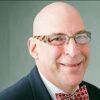In addition to founding ham radio’s ARRL, Hiram Percy Maxim also invented the suppressor around 1902. Both the United States Department of Justice and the BATF refer to suppressors as “silencers” even though they do not actually silence a firearm, but rather reduce the noise level by a factor of 1000 percent, or 30 decibels. Certainly not like the “phht, phht” heard in the movies.
Many European governments mandate the use of suppressors, and they are perfectly legal to own in France without any law trying to regulate their purchase, possession, or design. Just a bit different from the United States where they are tightly regulated under the NFA.
How can a suppressor pay for itself? On February 4, 2015, a study was published, wherein researchers assessed the noise-induced hearing loss (NIHL) of 543 police personnel who had undergone periodic medical examination over a 12-month period. The mean duration of service was 14.75 ± 9.39 years and the prevalence of NIHL in this study population was a staggering 34.2 percent.
Lawsuits, back pay, and forced retirement of LE due to hearing loss are costing departments money and manpower. The obvious solution is for LE to wear sufficient hearing protection every time they pull the trigger on a firearm. But you can’t put a gunfight on hold to put on your ears, nor can you do your job while wearing hearing protection during your entire shift. The need for law enforcement to address occupational noise-induced hearing loss is real; it’s not something that can just fall by the wayside. And it’s only a matter of time before multi-million dollar payouts are made to dozens or hundreds of civilians who are within range of a shootout.
So tallying up the cost of early retirement and bystander lawsuits could convince your jurisdiction’s risk analyst that pursuing suppressors for agency firearms might actually be a good deal.
You owe it to your officers and jurisdiction risk official to investigate the use of suppressors to save hearing and money.



